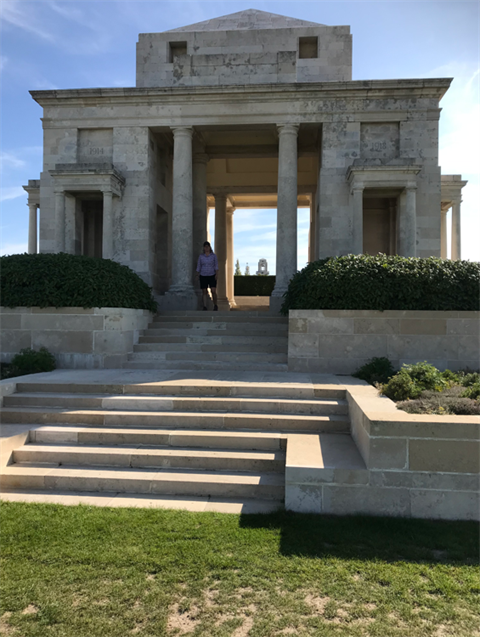17 November 2022, Cr Liesbeth Long- The Welcome Record
Published on 17 November 2022

Last Friday I was humbled to be asked to speak at the RSL Remembrance Day service in Dunolly.
I was born in the Netherlands and as such I did not grow up with the Anzac heritage that was still displayed so proudly on the 11th. This does not mean, however, that I don’t have a deep respect and appreciation for what the Anzac legacy means and stands for.
In July 2019 my husband Andrew and I travelled in Europe for 6 weeks. During that time we decided to visit Villers-Bretonneux which was the site of a huge allied battle during the first World War. Following the war, schoolchildren in Victoria helped raise the funds to rebuild the village school that was destroyed during the battle.
The special relationship between the people of Villers-Bretonneux and Australia was highlighted once again after the 2009 Black Saturday bushfires in Victoria. On learning of the destruction of the local Strathewen Primary School, the people of Villers-Bretonneux raised funds towards rebuilding the school. This gesture, nearly a century on from the Battle of Villers-Bretonneux, is testament to the enduring bonds between two great allies.
We caught the train from Paris to Amiens and then a short connection to Villers-Bretonneux. I had hired us an Air BNB for a couple of nights and we walked there from the station.
It was incredible to see the references to Australia everywhere, on street signs, restaurants, pubs and Australian themed murals on building walls. We passed the Primary School and above the playground quadrangle there was a huge sign proclaiming “Never Forget Australia.”
The next day, we walked to the Sir John Monash Centre, which is set on the grounds of the Villers-Bretonneux Military Cemetery in northern France, and adjacent to the Australian National Memorial (see photo). It tells Australia’s story of the Western Front in the words of those who served.
It was a stunning day with a blue sky and rolling hills as far as the eye could see. But there was also a sombre feeling in the air and we were quiet the whole time as we contemplated what had happened here so many decades before.
We were both incredibly moved by the immersive experience and it gave us a better understanding of the journey of ordinary Australians which was told in their own voices through letters, diaries, videos, audio and life-size images. To be able to connect with the places they fought and died left us with a lasting impression.
If you are ever in Europe, a visit to Villers-Bretonneux is an absolute must!